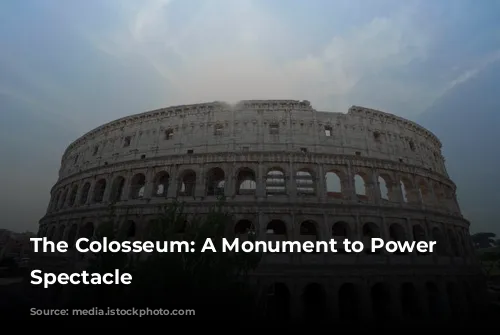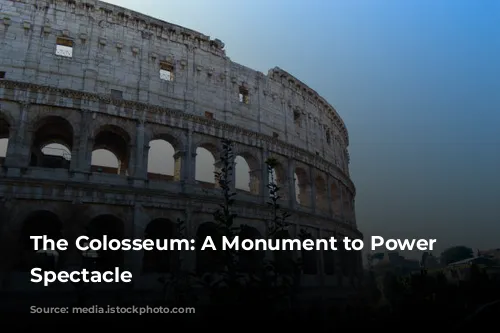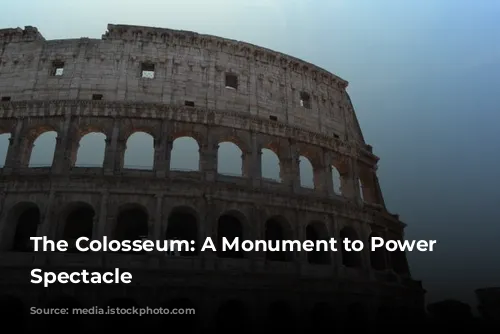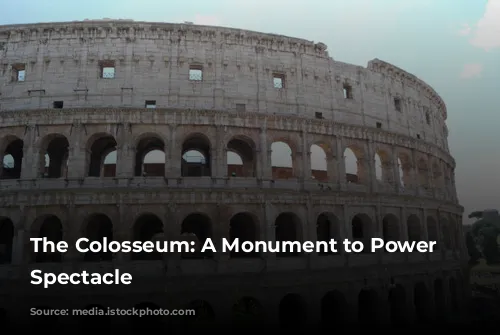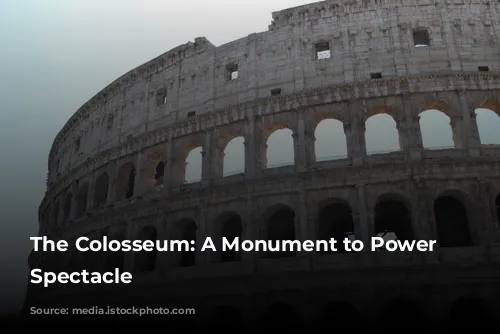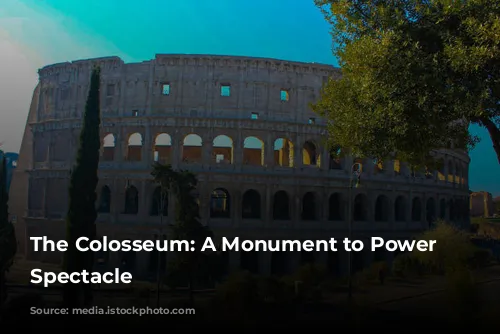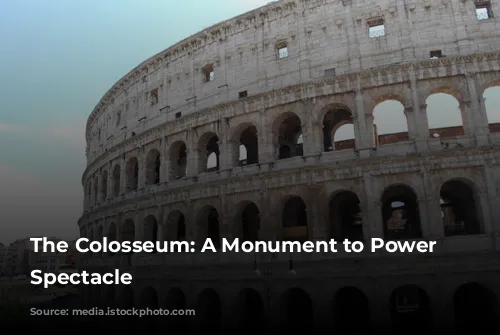The Colosseum, a name synonymous with ancient Rome, stands as a testament to the grandeur and brutality of the Roman Empire. This massive amphitheatre, built under the Flavian dynasty and officially known as the Flavian Amphitheatre, was inaugurated by Emperor Titus in 80 AD.
Its opening was a spectacle for the ages, spanning 100 days of gladiatorial combat, animal hunts, and naumachiae – mock sea battles staged within the arena. The historian Suetonius recounts that over 5,000 animals were slaughtered during these events, a testament to the Roman obsession with spectacle and violence.
The Colosseum’s Name: A Prophecy and a Legacy
But how did this grand structure become known as the Colosseum? The name appears for the first time in a prophecy by the Venerable Bede, a medieval monk. He proclaimed, “Rome will exist as long as the Colosseum does; when the Colosseum falls so will Rome; when Rome falls so will the world.”
This prophecy seems to connect the Colosseum’s fate with the fate of the empire itself. The origin of the name may lie in the colossal statue of Emperor Nero, known as “the Colossus,” which once stood nearby. Although the statue has been completely destroyed, its sheer size and grandeur may have inspired the name.
A Masterpiece of Roman Engineering
The Colosseum is a remarkable feat of Roman engineering. It stands as a testament to the skill and ambition of the Romans. The massive structure, originally covered in gleaming travertine stone, is elliptical in shape, maximizing its capacity for spectators.
The Colosseum’s four floors were a marvel of construction. The first three levels boasted eighty arches each, adorned with majestic statues. It is astonishing to consider that this monumental building was erected in less than a decade.
The Romans employed the arch, a key element of their architectural prowess, to distribute the weight of the colossal structure. This ingenious technique, evident in Roman aqueducts, allowed them to construct massive, durable buildings. The Colosseum can be viewed as a series of aqueducts stacked upon each other, demonstrating the mastery of this architectural principle.
A Legacy of Stone, Blood, and Spectacle
Today, we see only the skeleton of what was once the greatest arena in the ancient world. Time and neglect have taken their toll, leaving three-fifths of the outer wall in ruins. In the Middle Ages, the Colosseum was plundered for its materials, its marble, lead, and iron used to construct other iconic Roman structures like the Barberini Palace, Piazza Venezia, and even St. Peter’s Basilica.
The holes still visible in many columns serve as a reminder of this historical plunder. They mark the spots where lead and iron were extracted, leaving a testament to the cyclical nature of history, where one monument’s downfall fuels the rise of another.
The Colosseum could hold up to 70,000 spectators, all drawn to witness the spectacles of gladiatorial combat and animal hunts. Seating arrangements reflected the social hierarchy of the time: the common people occupied the upper tiers, while the elite and the emperor enjoyed the best seats closest to the arena.
The Colosseum was not merely a venue for entertainment; it was a stage for the Roman state to showcase its power and control. Gladiatorial combat, animal hunts, and mock sea battles were used to distract the populace from social and political issues, uniting the citizens through their shared participation in these thrilling events.
Gladiators: Heroes of the Arena
The gladiators, the stars of the Colosseum, were a diverse group. Some were prisoners of war who chose combat over enslavement, hoping for freedom after a set period of time. Others were simply impoverished individuals seeking fame and fortune. Their profession brought them wealth and notoriety, particularly among the women who often showered them with lavish gifts and affection.
There were twelve distinct types of gladiators, each equipped with unique weapons and armor. From the “Retiarius” with his net and trident to the heavily armored “Secutor” armed with a javelin and shield, these warriors fought for the entertainment and approval of the crowd.
The fate of the defeated gladiator lay in the hands of the emperor. The audience, fueled by adrenaline and spectacle, would roar their approval or disapproval, determining the gladiator’s fate. A raised thumb signified mercy, while a downturned thumb meant certain death.
These brutal spectacles captivated the Roman populace, much like modern-day “splatter” cinema. The Colosseum was a stage for raw violence and bloodshed, a stark reminder of the Roman fascination with brutality.
A Legacy of Blood and Stone
After the decline of the Roman Empire, the Colosseum fell into disrepair and ruin. Its walls became shelter for religious groups, hospitals, and even a cemetery, a testament to the ever-changing nature of history.
In the 18th century, Pope Benedict XIV declared the Colosseum a sacred monument, dedicated to the Passion of Christ. This act preserved the Colosseum from further destruction and allowed its symbolic transformation into a place of Christian worship.
Today, the Colosseum stands as a powerful symbol of Rome’s legacy. Its grandeur and brutality, its architectural mastery and its capacity for violence, continue to fascinate and captivate visitors from across the globe. For tourists, as Charles Dickens aptly noted, “seeing the Colosseum means, seeing the ghost of old Rome floating over the places its people walk in.”
